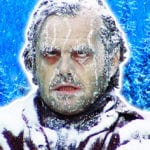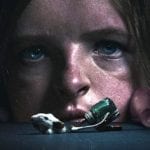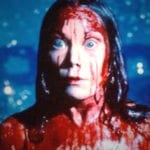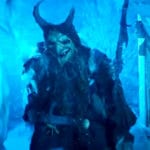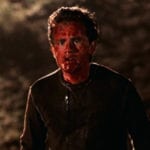 Humans
Humans  Humans
Humans  Gaming
Gaming 10 Overused Game Villains
 Mysteries
Mysteries Ten Mysterious “Ghost Ship” Stories That Still Keep Us Wondering
 Technology
Technology 10 Times AI Replaced Humans (and No One Noticed)
 Politics
Politics 10 Dreaded Despots Who Met Untimely Deaths
 Pop Culture
Pop Culture 10 Celebs Who Have Surprisingly Wanted to Be on Reality TV
 Creepy
Creepy 10 of the Strangest Popular Creepypastas
 Animals
Animals 10 Animals That Used to Be Bigger
 Our World
Our World 10 American Cities, Towns & Villages That Are Unlike Any Other
 Movies and TV
Movies and TV 10 Huge Movies Almost Made by Other Directors
 Humans
Humans 10 Real Life Versions of Famous Superheroes
 Gaming
Gaming 10 Overused Game Villains
 Mysteries
Mysteries Ten Mysterious “Ghost Ship” Stories That Still Keep Us Wondering
Who's Behind Listverse?

Jamie Frater
Head Editor
Jamie founded Listverse due to an insatiable desire to share fascinating, obscure, and bizarre facts. He has been a guest speaker on numerous national radio and television stations and is a five time published author.
More About Us Technology
Technology 10 Times AI Replaced Humans (and No One Noticed)
 Politics
Politics 10 Dreaded Despots Who Met Untimely Deaths
 Pop Culture
Pop Culture 10 Celebs Who Have Surprisingly Wanted to Be on Reality TV
 Creepy
Creepy 10 of the Strangest Popular Creepypastas
 Animals
Animals 10 Animals That Used to Be Bigger
 Our World
Our World 10 American Cities, Towns & Villages That Are Unlike Any Other
 Movies and TV
Movies and TV 10 Huge Movies Almost Made by Other Directors
Top 10 Eras Of Horror Movies
We use science-fiction to look to our future and fantasy to interpret our past. We use horror to talk about our present, about what scares us, about what’s wrong with the world we live in. The scary movies that make the most lasting impact are usually the ones that can exploit those niggling subconscious anxieties we get from the world around us. It’s what makes it so easy to place a horror film in its own time. What were afraid of? What are we afraid of now? And how do we show it on the screen? We need only look to the history of horror to find out.
Top 10 Must-See Recent Genre-Defying Horrors
10 Where It All (Mostly) Began (1910s)
Perhaps unsurprisingly, many of the films of the era of the Great War were short (as were pretty much all movie experiments before this decade), silent, or lost. That, however, does not leave us entirely devoid of excellent examples of moving pictures for the era. Released on the 10th of March, 1911, L’Inferno became the first full length film in Italy. It covers the first part of Dante’s famous Divine Comedy and it took three years to make! Starkly in contrast to movies from Hollywood which seem to yearn for the end of wholesome living, this one was designed to frighten viewers into becoming better Christians. It even features Mohammed in hell in an unflattering image that would probably put the lives of the directors (Francesco Bertolini, Adolfo Padovan, and Giuseppe De Liguoro) at risk today.
Meanwhile, in the German Empire, the first film depicting vampires was produced: A Night of Horror (Nächte des Grauens, 1916). Of note it starred Emil Jannings who was later to become the first man to win an Academy Award for best actor (though not for this film). Another notable crew member was the great cinematographer Max Fassbender who was to find fame working with the likes of Fritz Lang in later years—you really shouldn’t miss his brilliant pictures M (1931) and the more famous Metropolis (1927).
Meanwhile, in the United States, D. W. Griffith (of The Birth of a Nation fame) directed The Avenging Conscience in 1914 based on tales by Edgar Allen Poe.
Reflecting the world war that was to befall our nations, Germany and the US were both serious contenders for world domination in cinema. The German empire lost the war and was replaced by the Weimar republic. But this, in turn, indirectly won the battle for moviegoers attention as much of the critical social theory of the Frankfurt school wound up moving to the United States and finding a home in Hollywood and academia.
The one that started it all: L’Inferno (1911)
9 The Silent Era (1920–1931)
Horror films of the silent film era are so much more than scary movies without sound. Your mileage may vary—some people struggle watching movies without colour, let alone sound—but those who are open to them know that these movies are a uniquely creepy watch.
These early horror films emerged from German expressionism, a genre of weird shapes, distorted shadows and heightened performances. The most well known of these are The Cabinet of Dr. Caligari (1920) and Nosferatu (1922), an unauthorised Dracula knockoff that only survives to this day because Bram Stoker’s widow failed to destroy it—cancel culture is not a new thing!
Working with no dialogue for an audience used to theatre and melodrama makes every frame of the Silent Era gleefully over-the-top. Max Shreck (Nosferatu) makes an impression as the distinctive pointy-eared Count Orlok through the extraordinary use of makeup. Lon Chaney famously did his own makeup for his roles in Hunchback of Notre Dame (1923) and Phantom of the Opera (1925), creating a ghoulish rogues gallery of goofy movie monsters.
The one that started it all: Cabinet of Dr. Caligari (1920)
8 The Golden Age (1931–1954)
Beginning in 1931 with Dracula and Frankenstein (both huge financial hits), the horror movies of the 1930’s were largely dominated by the Universal Classic Monsters, the world’s first cinematic universe. Universal adapted classic gothic literature and science-fiction into mainstream hits like The Mummy (1932), The Invisible Man (1933) and The Wolf Man (1941). Meanwhile, Paramount found success in Dr. Jekyll and Mr Hyde (1931), and Warner Brothers struck gold with Mystery of the Wax Museum (1933). If it was mentioned in the Monster Mash, it probably came out during this period.
Like all genres, however, horror comes in peaks and troughs. It began to devolve into self-parody throughout the 1940’s with films like House of Dracula (1945) and Abbot and Costello Meet Frankenstein (1948). It was with Creature from the Black Lagoon in 1954 that the classic Universal monsters finally bowed out, setting the stage for horror’s next big obsession.
The one that started it all: Dracula (1931)
7 The Atomic Age (1954–1968)
Ants (Them!, 1954), spiders (Tarantula!, 1955), crabs (Attack of the Monster Crabs, 1957), even women (Attack of the 50 Foot Woman, 1958); you name it, there was a bigger version of it coming over the hill. The Atomic Age was all about giant monsters and mad scientists; understandably so, given tensions over the H-Bomb.
Sandwiched between two of the best eras in horror history, the Atomic Age goes largely forgotten. The movies of this era usually go down as some of the worst ever made—Robot Monster (1953) and Plan 9 from Outer Space (1959) in particular, but that’s not wholly fair. There were some real gems mixed in with the trash—Godzilla (1954) and The Fly (1958) being prime examples. Psycho (1960) also came out during this time, but tagged in the serial killer Norman Bates in lieu of a giant monster, less a product of its time and more a precursor of what was to come.
The one that started it all: Creature from the Black Lagoon (1954)
6 The 1st Horror Renaissance (1968–1982)
1968 was a watershed moment in the history of horror cinema. The Hays code that had corseted horror for so long was finally lifted, the new wave was in full swing, independent cinema was thriving, everyone was already terrified of everything, and the Catholic Church completed what would be the most destructive and catastrophic council of all time, emptying pews in droves—it was the perfect time for a horror boom.
Rosemary’s Baby (1968), The Omen (1971), and The Exorcist (1973) all channelled the collapsing moral standards of America’s youth into a demonic baby, child, and teenager respectively. Night of the Living Dead (1968) and its sequel Dawn of the Dead (1978) upgraded zombies from Haitian voodoo puppets to an uncontrollable, unstoppable horde; director George A Romero revolutionised the subgenre with slow-burning social commentary on everything from the horrors of war and nuclear paranoia to mindless consumerism and corporate greed.
The one that started it all: Night of the Living Dead (1968)
5 The Splatter Age (1982–1991)
Throughout the last decade, Texas Chainsaw Massacre (1974), Halloween (1978) and Friday the 13th (1980) had slowly given birth to what we now call ‘slasher movies’, each with their own diminishing returns, each with less social commentary and more gratuitous violence than the last. It’s almost a cliche to point out that the early 80’s were dominated by such movies, each revolving around a masked killer slaughtering amorous youngsters in ever-more creative ways. Let’s just say that Halloween, Nightmare on Elm Street, Friday the 13th and even Texas Chainsaw Massacre had a lot of sequels during this period, and move on.
The gross-out also started to ramp up, with directors John Carpenter and David Cronenberg breathing new life into horror/sci-fi classics: Carpenter’s take on The Thing (1982) was reviled at the time but has gone on to become a classic in its own right, and David Cronenberg’s gruesome remake of The Fly (1986) came to define body horror for years to come. 1986 also brought us Evil Dead II, a cartoonish cabin-in-the-woods survival film that cared less about quality and more about shock and gore. Like Re-Animator (1985), the Evil Dead films have since spawned their own knowingly silly franchise that favours excess over pretense. All this splatter, however, has its own sell-by date.
The ones that started it all: The Thing (1982), Nightmare on Elm Street (1984)
4 The Dark Age (1991–2002)
By 1990, horror had gone into hibernation, hiding itself underneath other genres. The Academy award winning Silence of the Lambs (1991) was one part horror and two parts police procedural; The Sixth Sense (1999) was more of a psychological drama; in Scream (1996), Wes Craven satirised the very subgenre he helped define, blending blood and guts with self-aware comedy. Even The Blair Witch Project (1999), widely considered one of the highlights of this period, is relatively low on actual scares.
This is not to say that there are no good horror films from the 90’s. Horror marched on abroad in places like Belgium (Man Bites Dog, 1992) Japan (Ringu, 1998), and Spain (The Devil’s Backbone, 2001), but with the end of the Cold War and relative economic stability in the West, the United States found little to be afraid of. There was no singular trauma to be worked out on the big screen. It would take a while for horror to climb out of this particular slump.
The one that started it all: Silence of the Lambs (1991)
3 The Saw Era (2002–2009)
And then 9/11 happened. Also the Iraq War, GTMO, anthrax… Suddenly things seemed a little less sunshine-and-rainbows. No one could be trusted . . . cracks in the social façade were beginning to appear and the mainstream media’s fake news and the deep state began to be noticed and rejected by the hoi polloi. Danny Boyle’s 28 Days Later (2002) showed us a society in a state of utter disrepair. There is no government. The army are a bunch of lecherous hounds committing war-rape. No one is coming to save you.
The most dominant characteristic of this decade is perhaps the obsession with torture. Movies like Saw (2003) and Hostel (2005) are the Lennon-McCartney of this subgenre, making directors Eli Roth and James Wan the big names they are today. But as was the case in the 80’s, gore provides diminishing returns. While most of the gore in the first Saw happens offscreen, the increasingly Flanderized sequels ended up boring fans and alienating casual cinemagoers. It was time for the genre to get a kick up the behind.
The one that started it all: 28 Days Later (2002)
2 The 2nd Horror Renaissance (2009–2019)
Fun fact: 2009’s Paranormal Activity is (based on returns on investment) the most profitable movie ever made. This should come as no surprise: horror movies have always been cheap to make, and have never struggled to find an audience—it wasn’t until affectionate parody Cabin in the Woods (2012) came out that the new Renaissance really got going. Both Cabin in the Woods and the clever and quirky It Follows (2014) deconstructed the tropes of the genre and challenged horror to do better. Blumhouse Productions started churning out chillers on a shoestring budget, taking full advantage of the horror goldmine. In 2010, Black Swan became the first horror film since The Sixth Sense to be nominated for Best Picture.
Social commentary was the bedrock for this new wave of horror: The Babadook (2014), Goodnight Mommy (2014) and Hereditary (2018) examined the pitfalls of motherhood through the desolation of a third-wave feminist lens. Meanwhile, A Quiet Place (2018) turned to the comfort of a traditional family unit in an otherwise despairing world. The Purge movies (2013 onward), love them or hate them, wrestle with social inequality—the upper class are impervious to the Purge while the working class are left on the city streets, beset on all sides by crime, violence, poverty and paranoia.
The one that started it all: Paranormal Activity (2009)
1 The Lockdown Era (2020–Now)
The first coronavirus lockdown began in the Hubei Province of Communist China in January 2020. Three months later the disease and consequent lockdowns spread to Italy. And, well, you know how the rest of that nightmare goes . . . we are living in it right now!
Suffice it to say, under curfews, lockdowns, and suffering the loss of personal freedom, making pictures is not so easy and as we are only in the first two years of this new decade our options are scant. But not so scant that we can’t rustle up a film that fits in with the rest here. Rather than go through a list of all the obvious horrors involving masked men (we get enough of that in our supermarkets these days) such as Followed (June 2020) and Get Dunked (August 2020), and The Wretched (May 2020), our top pick for this time period is The Invisible Man.
The Invisible Man features Elisabeth Moss, the brilliant actress whose already bright star dazzled in the horrifying The Handmaid’s Tale, showing us what society would look like if the terrible 1970s Islamic revolution in Iran were to happen closer to home. The Invisible Man is a great take on the classic H. G. Wells tale albeit updated to involve technology and its abuse (social media anyone?!) Incidentally, it was directed by the Australian Leigh Whannell better known as the writer of the Saw movies and Insidious.
Our current year has not been without a worthy offering either. The obvious choice of viewing for most should be A Quiet Place Part II simply because it scores even higher (77%) than the first iteration released in 2018 which garnered a 74% rating out 100 on The Movie Database. But if you prefer a more thoughtful and slower paced movie, you might consider Old, the latest by M. Night Shyamalan of Sixth Sense fame where we witness a group of holidaymakers age rapidly over the course of a day. It brings together, notably, Gael García Bernal (who starred in the brilliant and vaguely gay-themed 2001 Mexican film Y Tu Mamá También) and Alex Wolff (the young man from Hereditary). It should satisfy those looking for a horror movie with a unique bent.
It’s a great time to be a horror fan. Probably because there’s so much to worry about out there in the real world. As Edward Van Sloan reminds us at the end of Dracula: “Just pull yourself together, and remember… there are such things as vampires.”
The one that started it all: The Invisible Man (2020)
Top 10 Creepy Scenes In Movies
David McCabe is a British playwright and critic. You can find him on Instagram (@davidmccabewriter) or check out his reviews on Exciting Stuff.
Jamie Frater founded Listverse in 2007. When he’s not creating fragrances for Frater Perfumes or collecting historical oddities, he can be found in the comments here or reached directly by email on [email protected].
